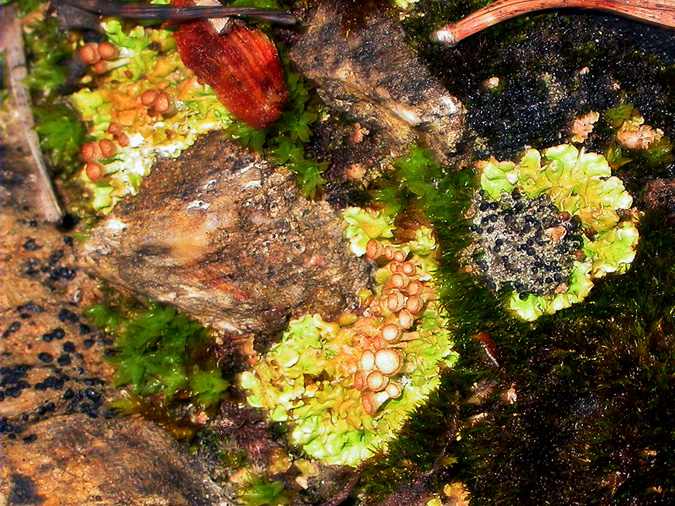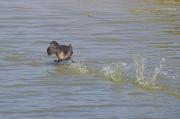Google Adsense Block





| Descripción: | Picture taken on the 26th May 2007 at Masella, not far away from the sky station, close the road, exposed, on soil, calcareous rocks, 1.200 m. altitude. Fruticose thallus, basal squamules very characteristic, very large and thick, up to 15 mm lenght, horizontally-spreading, overlapping, with lower surface normally hidden, forming when young pavement-like rosettes. Podetia wide and regular, 1-3 cm high, not sorediate, with large corticate granules or squamules (young podetia like those of the picture differ substantially from old ones). Similar to Cladonia pyxidata but with very large and thick basal squamules, sometimes not well developed. Thallus Pd + red. Fumaroprotocetraric acid, at least with respect material gathered by Dra. Rosa Burgaz described in Macrolíquenes de Castilla-La Mancha, pag. 64. Fumarprotocetraric acid is an antiherbivore compound, but it is only found in the medullar hyphae, and not in the cortex of Cladonia pocillum, not protecting the specimens from the moths larvae consume. Backer,M et Alter (2003) Influence of invertebrate feeding on the lichen Cladonia pocillum. Symbiosis, Vol. 34, pp: 281-291. For young specimens see picture in Flechtenbilder. For old specimens see: De Nederlandse Cladonia' s by Laurens Sparrius (on www). Timdal's Photo Gallery Good description in: N.G. Hodgetts (1992) Cladonia: a field guide (very good for field amateur naturalists). G. Aragon, I. Martinez, A.R. Burgaz (2001) Macrolíquenes de Castilla-La Mancha. Instituto de Estudios Manchegos. Armand Tomás Vidal Nikon Coolpix 4.500 Autoeye, PH, NI and HTLM Editor |
| Fecha: | 25.12.2007 14:02 |
| Impactos: | 2019 |
| Descargas: | 0 |
| Puntuación: | 0.00 (0 Votos) |
| Tamaño de archivo: | 70.9 KB |
| Envíado por: | atomasvidal |
| Palabras clave: | Lichens, liquenes, liquens, Cladonia, pocillum, Masella, Girona, Oriental, Pyrenees, Catalonia, Spain |
|
||||

